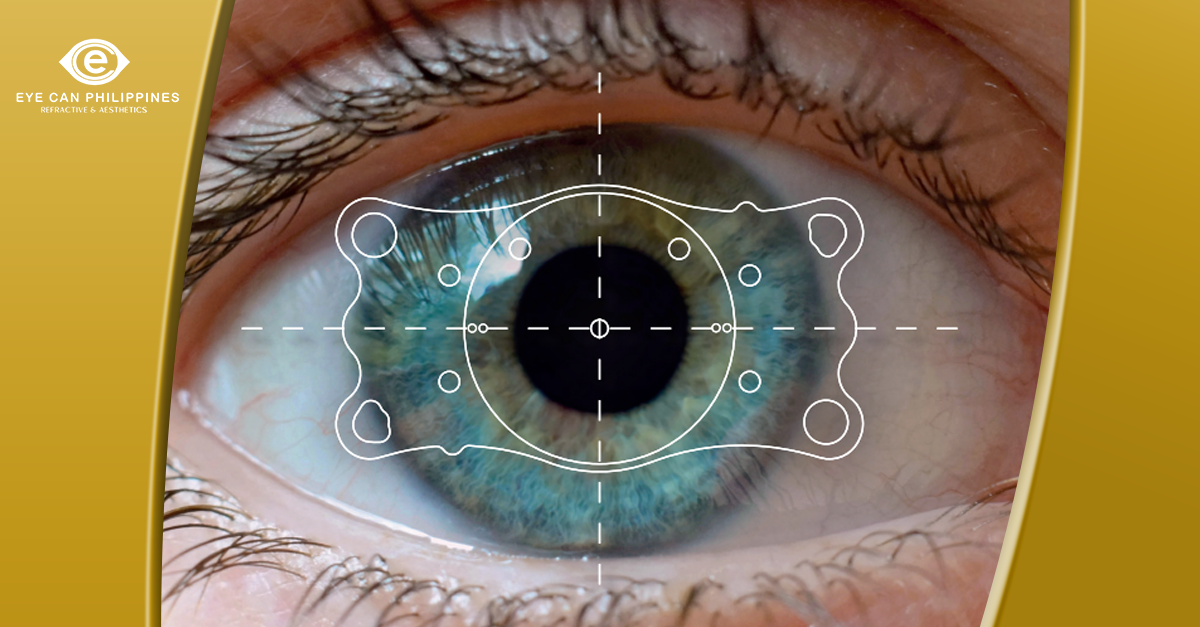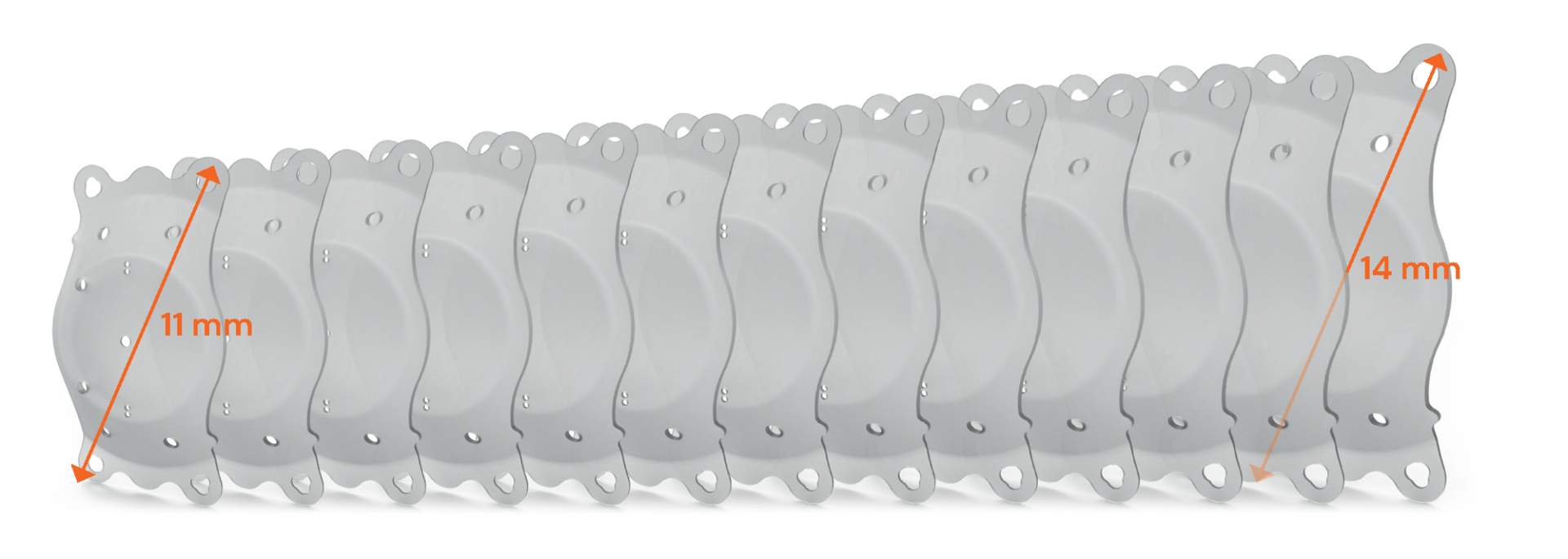
ICL, or Implantable Contact Lens surgery, is a procedure designed to improve vision by placing a tiny, flexible lens inside your eye. Unlike LASIK, which reshapes the cornea, ICL works with your natural eye structure to correct refractive errors such as nearsightedness, farsightedness, and astigmatism.
The procedure is typically quick, often completed within 20 to 30 minutes, and is performed under topical anesthetic eye drops. Patients usually notice improved vision almost immediately, though full stabilization can take a few days.
ICL is especially helpful for people who have low to high prescriptions, thin corneas, or dry eyes often find ICL to be a safer and more reliable option. In addition, the lens is removable or replaceable if your vision changes over time, giving you flexibility that other procedures cannot offer.
While ICL has a strong safety record, understanding the procedure fully is the first step in making an informed choice. In the next sections, we will dive into the potential risks, both common and rare, so you know what to watch for before and after surgery.
Common Risks of ICL Surgery
Even though ICL has a high success rate, some patients may experience temporary side effects:
Halos & Glare (nighttime “rings” or smearing)
- Why it happens: At night, larger pupils can allow light to pass the lens periphery, causing scatter.
- What you may notice: Streetlights or oncoming headlights can appear as rings or a smear while night driving. In most cases, the brain adapts over several weeks to months and these effects lessen.
- Our approach: We carefully assess candidacy (including pupil size and corneal shape), select the appropriate power and lens size, and provide postoperative drops and follow-up.
- With IPCL: The IPCL (EyeOL) has an optic diameter of 6.6 mm, which is larger than many other lenses. This helps keep light within the optic zone at night and reduces halos and glare for large-pupil eyes.
Temporary dryness & foreign-body (gritty) sensation
- Why it happens:Mild, short-term stress on the corneal surface and the effects of postoperative drops. Because IPCL does not remove corneal tissue (unlike LASIK), chronic dry eye is less likely.
- Our approach:We individualize lubricating/protective eye drops and moisture care after surgery. In most cases, symptoms settle within a few days to a few weeks.
- With IPCL: Since the corneal nerves aren’t cut or ablated, the relative risk of dry eye is lower.
Intraocular pressure (IOP) rise (rare)
- Why it happens: After surgery, issues such as imbalances in the eye’s fluid outflow, inflammation, or a response to steroid eye drops can occasionally occur, but these are usually manageable with proper follow-up care.
- Our approach: We check anterior chamber depth and the angle preoperatively, monitor IOP regularly after surgery, and control it with drops when needed.
- With IPCL: Recent models use a central flow port to facilitate aqueous circulation. Compared with many lenses, IPCL also features additional micro-ports. The four optic–haptic holes are designed to provide additional aqueous flow and help reduce the risk of IOP elevation. In suitable eyes, this design may allow the surgeon to avoid a pre-operative iridotomy (at the surgeon’s discretion).
Rare but Serious Risks
Although uncommon, there are risks that every patient should know about:
Cataract Risk
This typically develops as we get older, though in rare cases, they may occur earlier after ICL surgery.
Why it happens: Factors include the distance between the implanted lens and the natural crystalline lens, lens metabolism, and age-related changes
Our approach: We evaluate lens thickness and anterior chamber depth before surgery, then monitor with regular checkups. If a cataract develops, the implanted lens can be safely removed and cataract surgery performed.
With IPCL: IPCL is reversible (removable/exchangeable) and is designed to maintain a healthy vault (clearance) over the crystalline lens. Compared with many lenses, IPCL is engineered to maintain a wider vault (more space), helping to reduce mechanical contact/pressure on the anterior capsule and potentially lowering the risk of anterior subcapsular cataract. Its fine-grained sizing helps your surgeon target the intended vault for your eye.
Lens Decentration or Rotation
In rare cases, the ICL lens may shift or rotate, which is more common with toric lenses used to correct astigmatism.
-
Why it happens: Individual anatomy (e.g., ciliary-sulcus width) and temporary settling after surgery.
A mismatch between eye size and lens size can allow slight movement. - Our approach: We improve sizing accuracy with multi-parameter measurements (white-to-white, anterior chamber depth, etc.), target the intended vault, and, if needed, perform simple in-clinic realignment.

With IPCL: Even with state-of-the-art measurements, every eye is unique, so on rare occasions the lens may need postoperative fine-tuning. The IPCL offers very fine size increments (11.0–14.0 mm in 0.25-mm steps; 13 sizes), which means your surgeon can adjust alignment or exchange the size if needed, often as an outpatient procedure. In addition, IPCL is custom-made for each eye (power/astigmatism/axis), enabling a closer anatomical fit and stable alignment. If rotation does occur, the design allows straightforward outpatient re-rotation. With accurate sizing and follow-up, rotation and lens-exchange rates are very low.

Infection (endophthalmitis/corneal infection) Risk (very rare)
Why it happens: ICL is an intraocular procedure, so if bacteria enter the eye, the nutrient-rich environment can allow them to multiply. Surface laser procedures such as LASIK also carry infection risk (typically corneal infections), although the site and mechanisms differ. We have not experienced a case at our clinic; published rates for ICL are on the order of ~1 in 3,000.
Our approach: Strict sterile operating-room protocol, pre-operative antisepsis, and an evidence-based peri-/post-operative antimicrobial drop regimen, plus close follow-up to detect and treat any early signs promptly.
What you can do:
- Disinfect your hands before using eye drops.
- Use all prescribed drops exactly as directed.
- Follow the written aftercare instructions.
- Attend all scheduled follow-ups.
Following these steps carefully can significantly reduce the risk of complications and help ensure a safer, smoother recovery after ICL surgery.
With IPCL: As with other posterior-chamber phakic IOLs, infection is very rare. If medically indicated, the lens can be removed or exchanged to support treatment. Contact us urgently for worsening pain, redness, light sensitivity, or decreased vision
Factors that Affect Risk
Not all patients face the same level of risk. Some factors include:
- Your current eye health and prescription
- The skill and experience of your surgeon
- Whether a thorough pre-surgery screening is done
These factors highlight the importance of choosing a trusted eye clinic with experienced specialists.
How Risks are Prevented and Managed
The good news is that many risks can be minimized. Clinics follow strict protocols to keep patients safe, including:
- Comprehensive eye examinations before surgery
- Careful measurement of anterior chamber depth and other eye structures
- Advanced sterilization and surgical techniques
- Regular post-surgery checkups to catch issues early
By following your doctor’s advice and attending scheduled follow-ups, you can greatly reduce the chance of complications.
Conclusion
ICL surgery has helped millions of people enjoy clear vision without glasses or contacts. While it does carry some risks, most are rare and manageable when the procedure is performed by skilled surgeons. With proper screening, careful surgical techniques, and good post-operative care, ICL remains a safe and effective option for long-term vision correction.
If you are curious about whether ICL is right for you, the best next step is to book a comprehensive eye screening at Eye Can Refractive & Aesthetics and talk to our eye specialist who can guide you through your options.
Got Questions? Let’s Talk!
Call us:0991 188 0540 | 0968 268 7819
Message us on Facebook:Eye Can Philippines Refractive & Aesthetics
📍 Visit us:34th Floor, Atlanta Center Building, Annapolis St., Greenhills, San Juan City
🕒 Clinic Hours:Monday to Saturday, 8:00 AM – 5:00 PM
References:
Tomita Ginza Eye Clinic. (2022, January 19). The advantages and disadvantages of ICL (An ophthalmologist explains your concerns). Tomita Ginza.
https://www.tomita-ginza.com/column/2022/01/19/17/
Healthline. (2020, February 28). ICL surgery procedure, benefits, side effects, and recovery. Healthline.https://www.healthline.com/health/icl-surgery
Focus Clinics. (2023, August 15). The safety & risks of ICL surgery. Focus Clinics. https://www.focusclinics.com/lens-replacement-surgery/implantable-contact-lens/safety-and-risks


